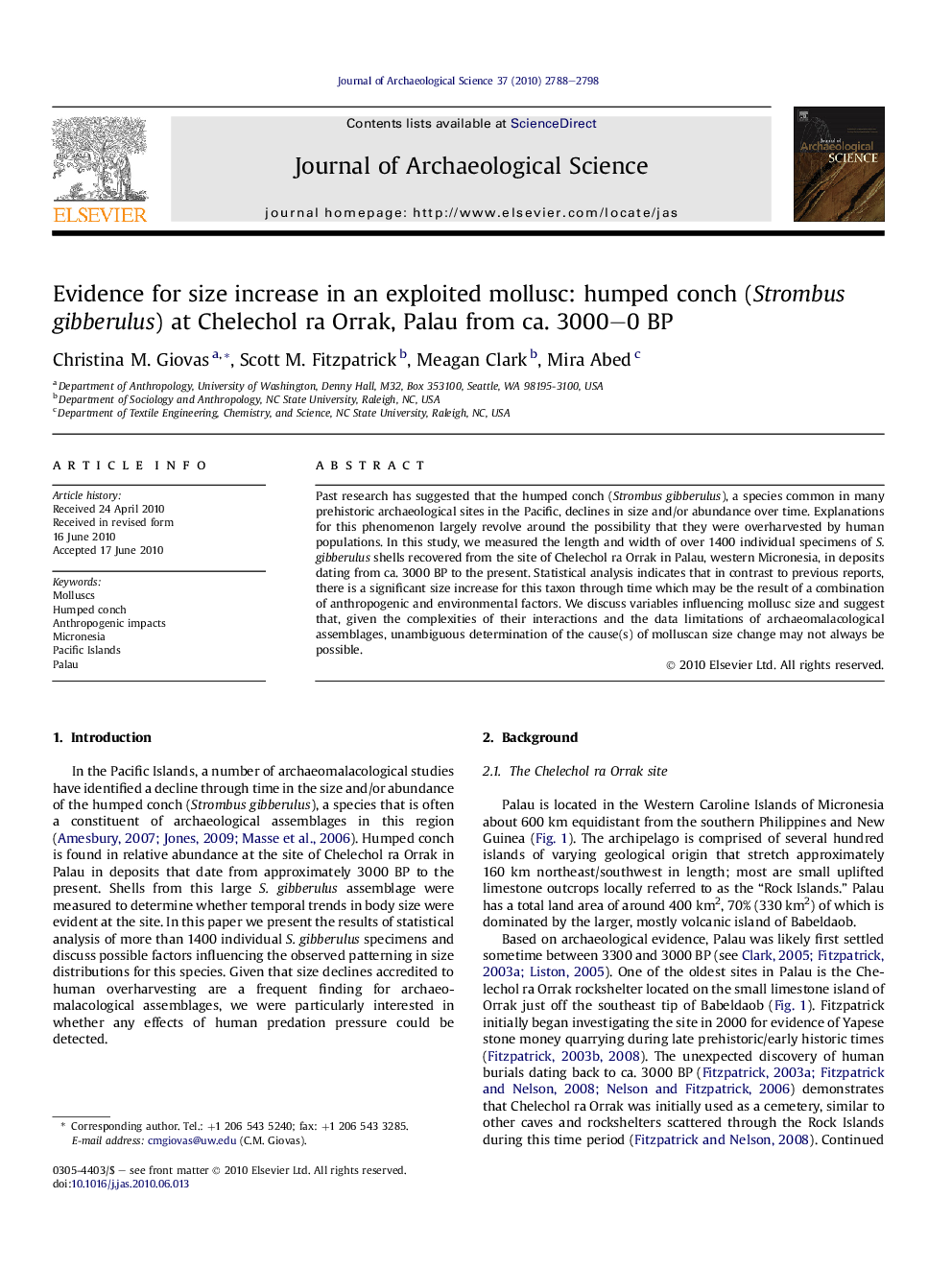| Article ID | Journal | Published Year | Pages | File Type |
|---|---|---|---|---|
| 1036475 | Journal of Archaeological Science | 2010 | 11 Pages |
Past research has suggested that the humped conch (Strombus gibberulus), a species common in many prehistoric archaeological sites in the Pacific, declines in size and/or abundance over time. Explanations for this phenomenon largely revolve around the possibility that they were overharvested by human populations. In this study, we measured the length and width of over 1400 individual specimens of S. gibberulus shells recovered from the site of Chelechol ra Orrak in Palau, western Micronesia, in deposits dating from ca. 3000 BP to the present. Statistical analysis indicates that in contrast to previous reports, there is a significant size increase for this taxon through time which may be the result of a combination of anthropogenic and environmental factors. We discuss variables influencing mollusc size and suggest that, given the complexities of their interactions and the data limitations of archaeomalacological assemblages, unambiguous determination of the cause(s) of molluscan size change may not always be possible.
